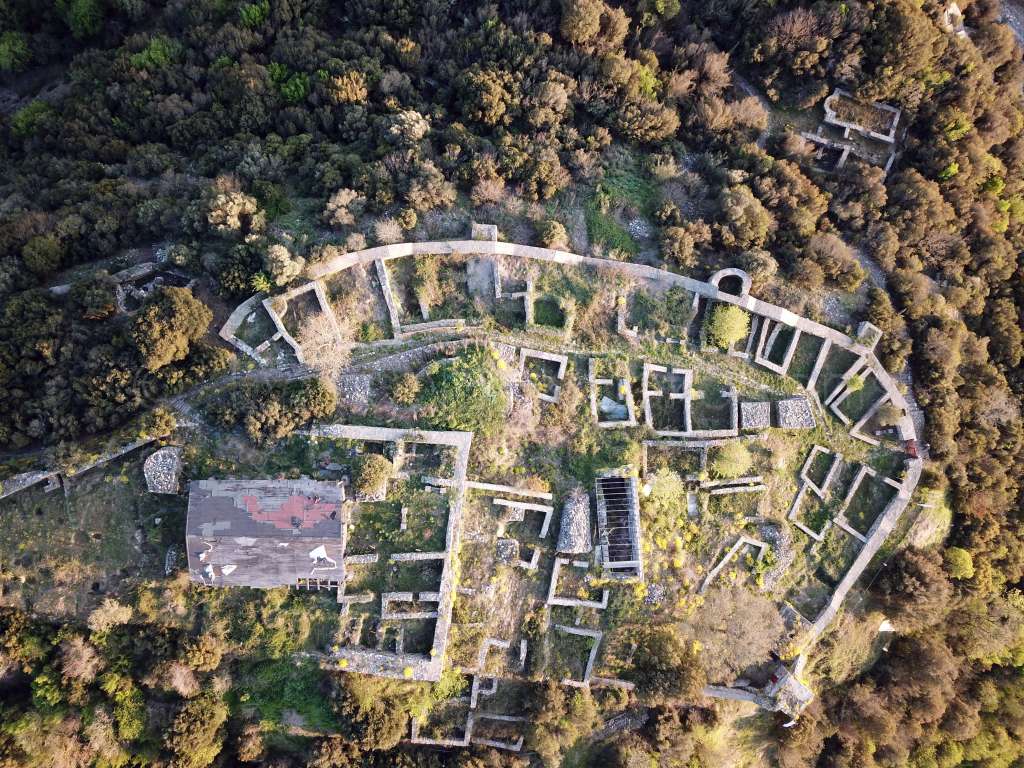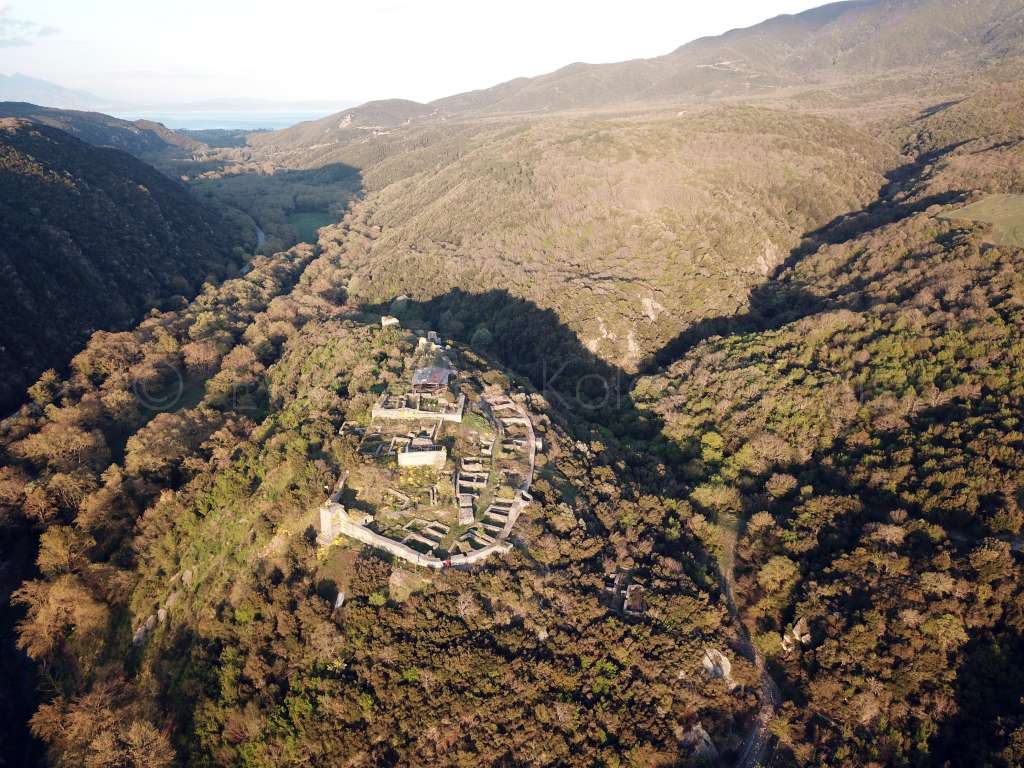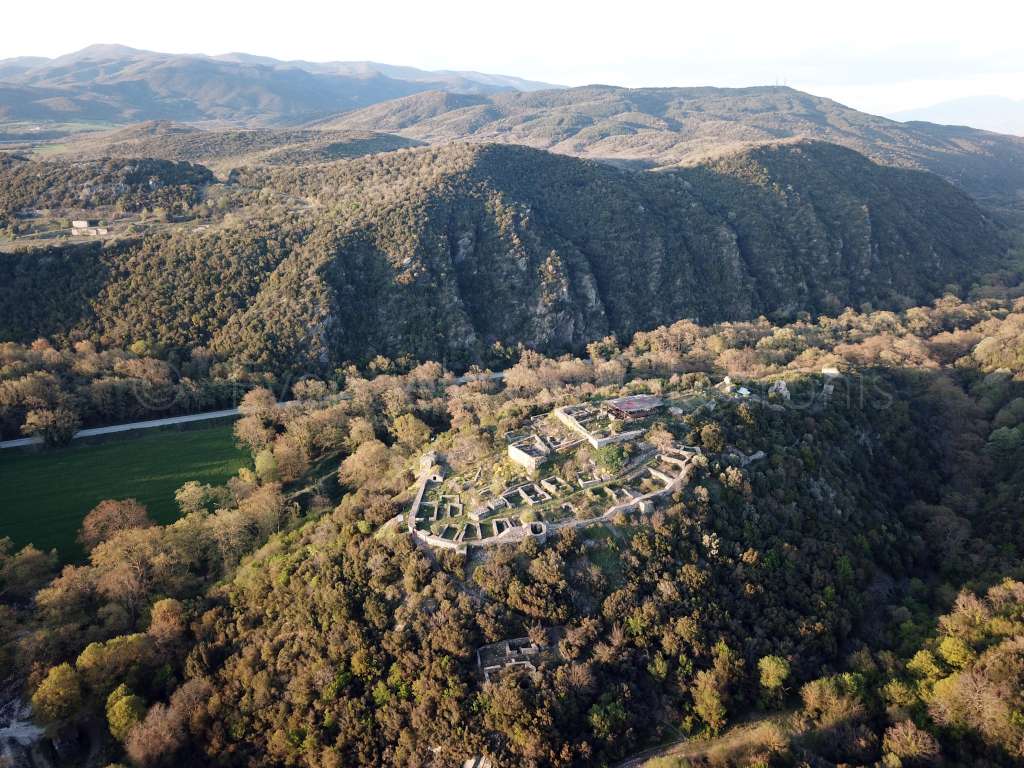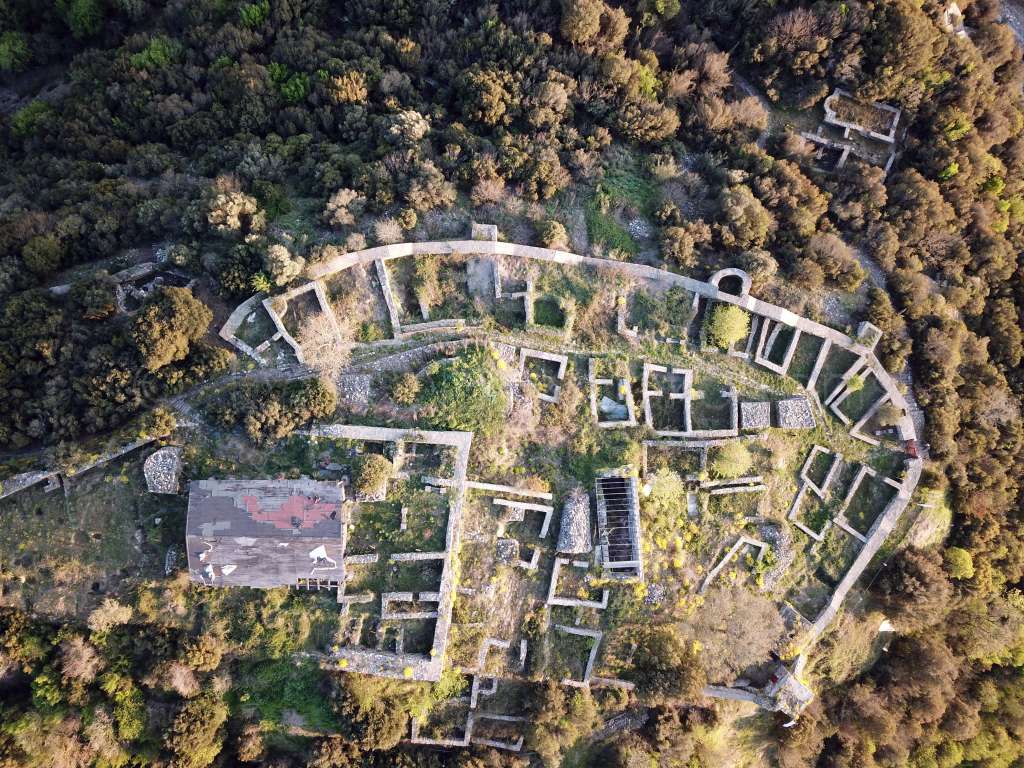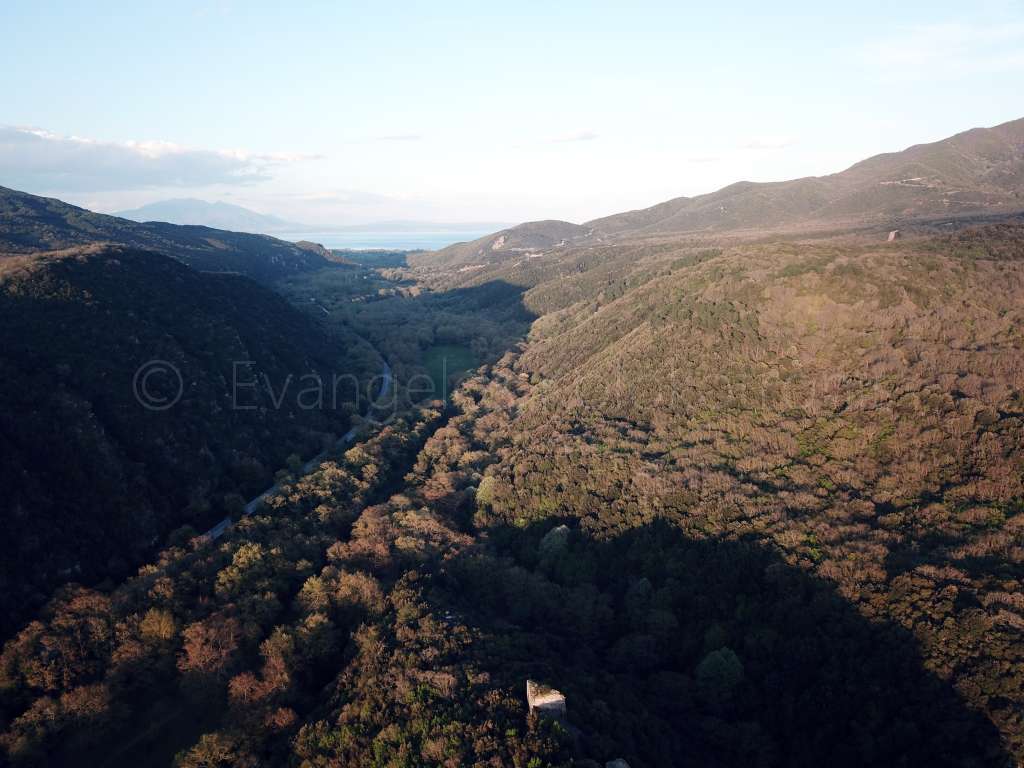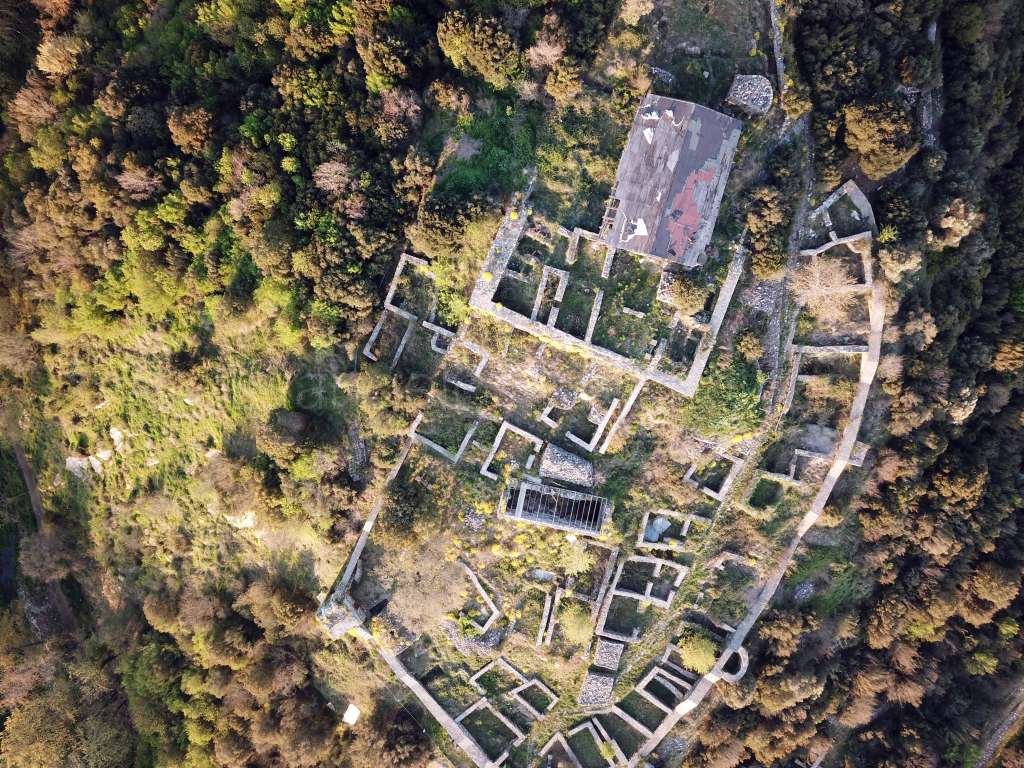Castle of Rentina
Rentina Castle is located on the top of a hill, next to the River Rheio, at the western entrance of the Rentina Strait or Macedonian Tempe. It was continuously inhabited from the earliest years until the early years of the Turkish occupation, when it was abandoned because its strategic importance was now downgraded and the Turks chose the neighboring Volvi as their place of residence.
Traces of human presence on the hill are evidenced by findings from the Neolithic Age. The settlement continues uninterruptedly until late antiquity. Then, about 450 AD, the first fortification takes place. [1] Later, Emperor Justinian (527-565) reinforces the fortifications and re-establishes the castle - this is the Artemision fortress mentioned by Prokopios. By 570 the Slavs crossed the Danube to the south, and throughout the 7th century they no longer had enough raids, but settled in large groups in the deserted countryside. They create islands of the population, the Sclavenians who have their own organization and leadership. The valley of Rhechios is inhabited by the barbarian sex of the Rheinins, who, however, were probably of Vlach origin and were dragged down by the descent of the Slavs, as they are repeatedly referred to as "Vlachorhines".
Next stop in Rentinaʼs story, which also reveals the essential turning point in the castleʼs life, is its proclamation to a seat of diocese in about 900 (according to Leo Sophos (XVI-Young) XVI (886-907)). The bishop of Liti is now called "Liti and Rentin" and settles in Rentina, as Liti has declined and abandoned after the raids and subsequent population movements. During the 10th century the walls were repaired, towers rebuilt, the stairwell was created and the bulk of the houses and public buildings were rebuilt.
The castle follows the historical course of Macedonia during the Middle Byzantine period. In 1204 it was occupied by the Franks Crusader Knights and will be one of the strongholds of the Frankish Kingdom of Thessaloniki until 1224, when it falls into the hands of the Despot of Epirus. After the battle of Klokotinitzas (1230), Theodoreʼs son, John Doukas Komninos, declared himself a despot of Thessaloniki. His guard will leave Rentina as soon as he is informed that he is arriving in Nice with a large expeditionary body led by Emperor John Vatatzis. Vatajis entered the castle and spent the night there (1242).
Just a century later (1342), during the second Byzantine civilization, the fortress was occupied by Ioannis Kantakouzenos and installed a guard. Subsequently, the castle is overrun by the Syrians, the head of the Serres, capturing the soldiers and lords of the castle who collaborated with Kantakouzenos, imprisoning and torturing them. During the Paleolithic period the settlement was developed, fortifications were built and repaired, as well as the small dome-shaped church whose ruins are preserved today. The castle is now, apart from the dioceseʼs seat and the seat of the cathedral (Katepanikion Rentina), and is often mentioned in the archives of Mount Athos monasteries (13th-14th centuries).
Rendina falls successively to the Serbs (b. 1345), to the Greeks (1371), to the Turks (1383), again to the Greeks (1402) and eventually to the Ottomans (before 1423). With the final conquest of the Turks begins the decline of the castle that will lead to its permanent abandonment. Nomads settle in the area and the administrative center is moved to Besiki (todayʼs Volvi). Few 16th-century coins indicate an occupation, but in the 17th century it is certain that dense vegetation has captured the castle as the last conqueror. [3] The Battle of Rentina took place at the Strait of Rentina on June 15, 1821 between the Macedonian Revolutionary Guards and the Ottoman Army.
